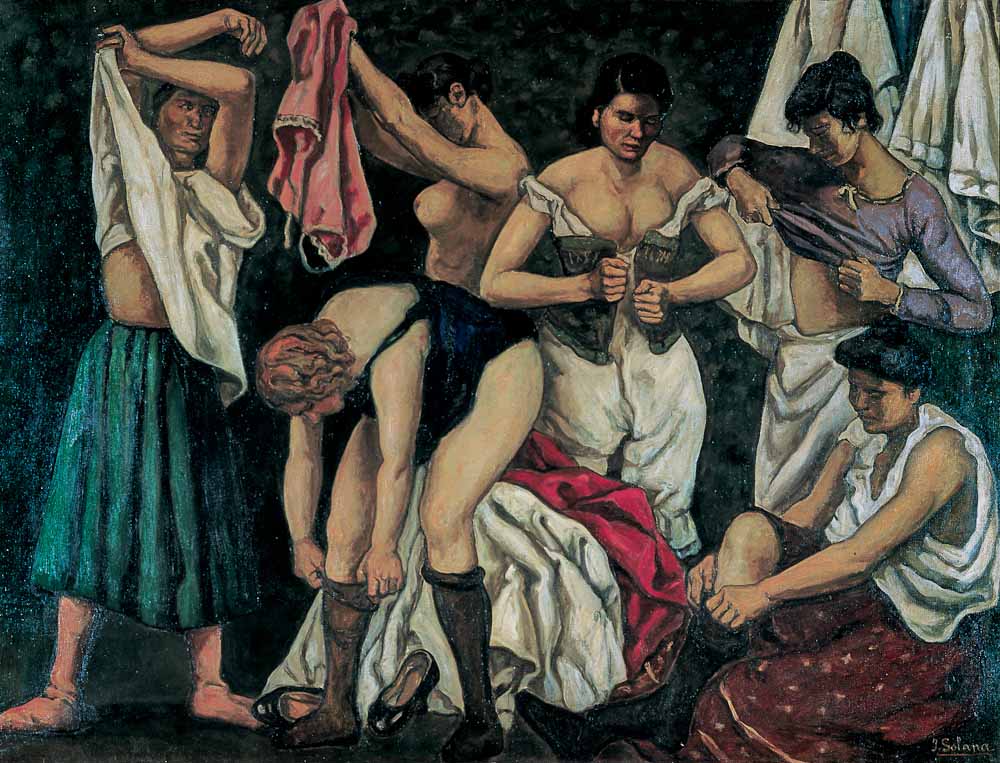
José Gutiérrez Solana (Madrid, 1886-1945)
Women dressing
ca. 1933
WORK INFORMATION
Oil on canvas, 173 x 225 cm
OTHER INFORMATION
Signed at the lower right corner “J. Solana”
Solana the painter always reflected Solana the writer in his pictorial works, which are in some cases notably literary. In the same way, his writing has an extremely visual quality. These two facets overlapped and mutually reinforced each other, and his paintings and writings focus on the same themes with the common aim of witnessing and reflecting the reality of his day. With his high individual, stark and austere gaze, devoid of any anecdotal detail or embellishment, Solana offered a unique vision not just of his generation but also of Spanish society as a whole.
Women dressing faithfully reflects the harsh reality that the artist described in the chapter “The Chorus Girls” in his book Madrid. Scenes and Customs: “Behind a half-open door are the scantily clad chorus girls in corsets and pantaloons, changing their theatrical costumes for normal clothes; they reveal their bare brown backs when they pull their skirts over their heads, and as they raise their arms one sees the tuft of hair under their armpits like a brown stain. They are ugly and dirty; they have lost the appeal that they have when they emerge on stage dressed as boatwomen with flesh coloured tights clinging to their legs, while their feet seem smaller in their high-heeled silk boots; one of them, who is pregnant, loosens her sash and corset with relief, having suffered on stage.”
These women’s passive attitude to life and their unlovely bodies are similar to those depicted in Solana’s scenes of prostitutes, although in this case the figures lack the absent gazes and resignation of the women from the slum quarter of Santander. Solana used the present subject to create a powerfully visual work painted in lively colours with strong whites and bold contrasts between the figures.
María José Salazar
